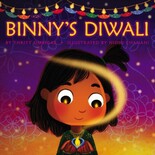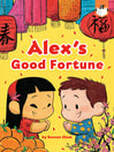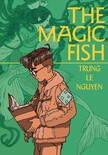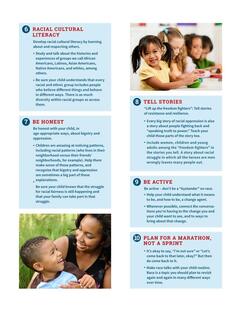|
With November being Native American Heritage Month, I wanted to share about some opportunities and resources. Of course, a quick internet search will surface a variety of resources such as those from Oregon tribal government websites, Library of Congress, National Archives, National Geographic Education, Smithsonian, and a collaborative website representing several agencies. However, I wanted to highlight a few resources related to collection development plus two events that are specific to Oregon – one on the 14th for anyone and one on the 15th for Native American teens. Indigenous Reads Rising (We Need Diverse Books) We Need Diverse Books has a new project called Indigenous Reads Rising, “a celebration of Indigenous children’s literature of Native Nations, centering those within the United States and Canada . . . We created Indigenous Reads Rising to fill a need—to provide a resource where teachers, librarians, and readers can embrace the diversity of Indigenous children’s and teen literature. This site includes articles about best practices, book lists arranged by age category and topic, and additional resources for educators, librarians, booksellers, families, and writers alike.” Additional Collection Development Resources Related to Books About or By Native Americans Some of you may be familiar with these resources for developing a collection of children’s and young adult books about or by Native Americans, but if not, here you go. 🙂
Office of Indian Education (OIE) Website and Newsletter (Oregon Department of Education) The Office of Indian Education at the Oregon Department of Education has several webpages of resources and education requirements, such as Tribal History/Shared History, Tribal Curriculum, and Indian Education Resources. Additionally, they publish a monthly newsletter, and anyone can subscribe. The November 2023 issue is robust; I encourage you to browse it. Celebrating Tribal Sovereignty and Identity – A Fishbowl (11/14) Staff at the Office of Indian Education occasionally have online office hours, and November’s session will be on the 14th from 4:00 to 5:15 pm => Celebrating Tribal Sovereignty and Identity – A Fishbowl. This description is from the OIE November newsletter: “We invite our vibrant AI/AN [American Indian/Alaska Native] community to come and engage in a fishbowl for Native American Heritage Month. Allies will listen in on the stories told by the AI/AN community on what celebrating Tribal Sovereignty and Identity means to them. At the end of the storytelling time, allies will be encouraged to share out their learnings and key takeaways from listening to their AI/AN peers.” Here’s the registration page. Please consider sharing about this in your school, district, or library. Native Youth Talking Circle (11/15) Two OIE staff will facilitate an online discussion on the 15th from 6:00 to 7:30 pm => Circle of Seasons: Listening to Native Youth. It is open to Native American students in grades 8-12. Here’s the registration page, which has a bit more information. Questions can be directed to [email protected]. Please consider sharing about this. AuthorJen Maurer, MLS (she/her)
0 Comments
Oregon Library Association Preconference: Tribal History/Shared HistoryAn OLA preconference offered a valuable training opportunity for school and public librarians to learn more about Tribal History/Shared History Curriculum and to think about how they can positively support and work with Oregon Tribes. Senate Bill 13, (otherwise known as Tribal History/Shared History) legally mandated that schools across Oregon integrate historically accurate and culturally responsive curriculum about Tribal History into K-12 education. Schools across the state are in the process of implementing the curriculum and Tribes are developing additional place-based educational resources specific to their own unique history. Libraries, both school and public, can play a role in supporting this effort by offering culturally relevant programming and collections, as well as advocating for access and inclusion of authentic Indigenous voices and stories in our libraries. The session was facilitated and organized by Mia Jackson, the Education Manager for the Museum of Natural and Cultural History (MNCH) at the University of Oregon. MNCH is in the final stages of completing a traveling exhibit that aligns with the Tribal History/Shared History curriculum. The exhibit, Native Innovation, will travel to different libraries throughout Oregon beginning later this year. The session was intended to give librarians more information about the Tribal History/Shared History Curriculum and to help libraries plan culturally responsive programming when the exhibit tours the state.
Additionally, two libraries offered examples of efforts to serve and work with local Tribes and the Native American communities in their services areas. Eva Red Bird, Indigenous Outreach Coordinator, Multnomah County shared some of the efforts her work group has made in providing outreach and indigenizing library spaces. Holly Goebel, Wallowa Library Director shared her experience working with a local nonprofit to support the Tamkaliks Celebration and preserve local history. The event was sponsored by OLA’s Children’s Services Division and the Oregon Association of School Librarians. A shout out also goes out to Ekatrina Sotomayor of Multnomah County, Star Todd of Jefferson County Library District and the Oregon State Library, who supported the event by providing their expertise and advice. You can view the session here: The booklist, slides, and a recording of the event are also currently available on the OLA Conference App. In the future, the resource will be accessible on NW Central. This preconference was given a shout-out on the May 2023 Oregon Department of Education Bulletin. Documents for You: Booklists, Slides, and Resource Links
AuthorJennifer Knight Oregon Mock Caldecott Committee announces short list for workshop
Here is the list of mock Caldecott nominations:
For more information about the Oregon Mock Caldecott Workshop, check out our webpage. Questions? Contact [email protected]. AuthorTara Morissette You May Have Missed
I encourage you to check out the whole presentation, as Manfredi’s enthusiasm is infectious and had me placing all sorts of holds and orders. Covering it all would be a very long blog post, so here are some highlights. See her entire presentation and her slide deck at the end of this blog post.
Board & Picture Book
Here is a bibliocommons list of board books and picture books that Manfredi recommended in her presentation.
Readers & Chapter Book
Manfredi shared tons of great comics suggestions, including highlighting the recent trend in early reader comics. For those looking for the next Gerald & Piggie, try the Fox & Rabbit series by Beth Ferry, illus. Gergely Dudás (Amulet Books) or the Bunbun and Bonbon series by Jess Keating (Graphix). Raina Telgemeier fans should dive right on into Twins by Varian Johnson, illus. Shannon Wright (Graphix), Stepping Stones by Lucy Knisley (RH Graphic), and the Shirley and Jamila series by Gillian Goerz (Dial).
Another publishing trend Manfredi shared was the boom in 80-112 page, highly-illustrated chapter books. She specifically called out three publishing imprints: Aladdin QUIX (Simon & Schuster), Acorn (Scholastic), and Harper Chapters (HarperCollins). Smaller publishers like Capstone are getting in the game as well, with series like Astrid and Apollo by V.T. Bidania, illus. Dara Lashia Lee (Picture Window) and Sadiq by Siman Nuurali, illus. Anjan Sarkar (Picture Window).
Young Adult
Take Manfredi’s word for it: vampires are back in YA publishing and anthologies are coming in hot. For both, Manfredi recommends Vampires Never Get Old: Tales with Fresh Bite edited by Zoraida Córdova & Natalie C Parker (Imprint). But the two books from 2020 Manfredi says she was thinking about all year were Not So Pure and Simple by Lamar Giles (HarperTeen) and Parachutes by Kelly Yang (Katherine Tegen Books), both realistic fiction. Manfredi’s highest praise, though, went to The Magic Fish by Trung Le Nguyen (RH Graphic), a graphic novel she calls “one of the best YA books ever.” (I 100% agree with her on that assessment!)
Watch the session from 9/25/2021Manfredi's Slide Deck
Click here to see Manfredi's slide deck. You will need to log into Google in order to view it.
For More Information
To wrap it all up, Manfredi shared some tips & tricks for keeping up with publishing:
AuthorAlec Chunn There was lots of information in my emails and online regarding Dr. Seuss and Read Across America. So, to make it easily accessible, I compiled the information in one place. Here is the press release by Dr. Seuss enterprises on March 2, 2021 from their website:
Dr. Seuss and RacismA peer-reviewed article called The Cat is Out of the Bag that discusses the racism in Dr. Seuss’ work: Ishizuka, Katie and Stephens*, Ramón (2019) "The Cat is Out of the Bag: Orientalism, Anti-Blackness, and White Supremacy in Dr. Seuss's Children's Books," Research on Diversity in Youth Literature: Vol. 1 : Iss. 2 , Article 4. Available at: https://sophia.stkate.edu/rdyl/vol1/iss2/4 Book “Was the Cat in the Hat Black? The Hidden Racism of Children’s Literature, and the Need for Diverse Books” by Philip Nel. Information from the publisher: “Gives those who teach, create, edit, or agent children's books potential tools to uproot systemic racism. Explores how children's literature obscures its racialized origins. Examines the common marketing practice of "whitewashing" and the growing resistance to it” Google talk with the author Philip Nel. Slate interview with Philip Nel about the press release from Dr. Seuss Enterprises on 3/3/2021. Opinion piece in SLJ, Choosing Not to Highlight Dr. Seuss Books is Not Censorship by Oregon school librarian Miranda Doyle. Article in School Library Journal about racism and monkey imagery: The Problem With Picture Book Monkeys: Racist imagery associating simians with Black people has a long history by Edith Campbell. School Library Journal, December 4, 2019. A great infographic by Katie Salo (Twitter: @storytimekatie): Diverse Books Recommendations for Reading Aloud Read across America’s recommendations of diverse books. Blog post by Jillian Heise that includes a list of diverse and inclusive read alouds. Collection DevelopmentCollection development and weeding decisions. What to do about books with cultural inaccuracies in your collection. Do you have an important resource to add to this collection? Let us know. Email [email protected]. A big thank you to Angie Manfredi, Youth Services Consultant at the State Library of Iowa for her contributions to the discussion, Katie Salo for her amazing infographic, Greta Bergquist for keeping us in the loop and Tessa Michaelson Schmidt, Wisconsin's Youth and Inclusive Services Public Library Consultant. Racism and ChildrenAuthor Kelly Yang opens up about her own experiences with racism in the wake of COVID19 and explains how we can teach kids to rise above hate during this critical time -- and always. YouTube Video. An incredibly in-depth look at resources on racism, children and Dr. Seuss by Philip Nel, Professor of English at Kansas State University. AuthorTara Morissette  A few years ago, Martín Blasco from Washington County Cooperative Services (WCCLS) coordinated a group of staff from most of the member libraries to take a course offered by Library Journal called Diversity and Cultural Competency Training: Collections and Readers Advisory. This was before Covid, so we met as a group and discussed the class as we went along. (We even had SNACKS.) One aspect of this course dealt with how to do a diversity audit of a young adult collection. I am definitely not a diversity expert and I’m not a diversity audit expert. I am someone from a small, rural library who took a course and audited a collection, and I’d like to share some of what I took away from the experience. Undertaking a diversity audit of your library collection can sound like a truly daunting, impossible task. In fact, it IS daunting to consider putting every title in your building under the intense scrutiny required by a diversity audit. Even in my little library, we have over 30,000 items. Fortunately, you don’t have to do the whole building and you don’t have to do it alone! Before undertaking an audit of your collections, I think it’s important to know WHY you’re doing the audit and what you hope to do with the information. Knowing why you’re doing it can help to motivate you and help to focus your audit. Are there collections you are planning to refresh? Are there collections that you think need to be more diverse? Or is there a particular segment of your service population that you want to make sure you have relevant books for? Setting up and conducting the audit was fairly simple for our library. We exported the collection data (Title, author, publication date) into an Excel spreadsheet. We then added columns after the title to enter a “1” for each type of diversity represented by the book. Similarly, the math was pretty simple. If you have 100 books and 20 of them are categorized as diverse, you have a 20% diversity rating. For our library, it made sense to print the spreadsheet and check the boxes by hand. Then a different person updated the spreadsheet with the notes and did the math. You could also split the collection into sections and share it among different staff. It’s a great project to work on a little bit at a time, when you have a little down time. It took me about 6 weeks to complete an audit of about 2000 books
Going forward, instead of doing more diversity audits of different collections, we decided to focus on making sure that every time we order, we do so with diversity in mind. In this way, we can address diversity across all of the library’s collections on a regular basis. For most books in the library, the time of purchase is when we are most involved with the content of the book, so that makes it a perfect time to address its diversity (or lack thereof). Our main selector specifically looks for diverse book lists and regularly uses content from the We Need Diverse Books blog and Lee & Low Books. The final piece that we added to our collections procedures is to take diversity into mind when weeding. If a high-quality diverse title hasn’t circulated, we give it more time than we would a non-diverse title, and we check to see if we’ve been putting it on display, including it on reading lists and otherwise giving it a good chance to circulate. On the flip side, we try to weed books with harmful stereotypes or outdated, overused tropes as soon as possible. For more information:
AuthorSusan Cackler |
OLA Home Don't miss a beat! Stay current with kids-lib, CSD's electronic mailing list.
Archives
May 2024
Categories
All
|
|||||||||||||||||||||||||||||||||||||||||||||||||||||||||||||||||||||||
|
Contact Us
Join Children's Services Division! Contact [email protected] for membership information. The purpose of this site is to improve communication among Division members, publicize Division events and activities, introduce new and prospective members to the Division, and to link to useful Internet sites. Bylaws & Award Procedures |

































 RSS Feed
RSS Feed

